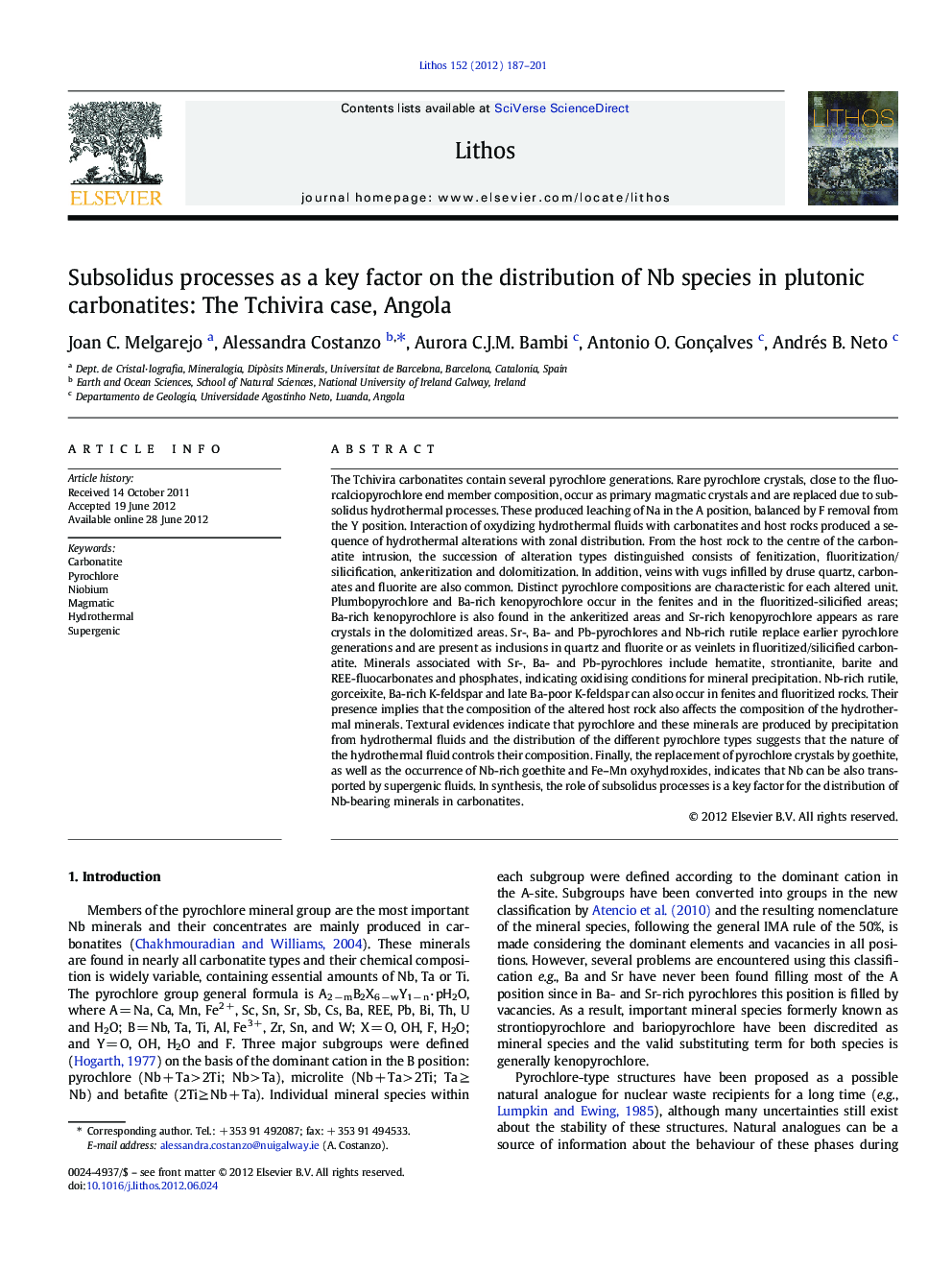| کد مقاله | کد نشریه | سال انتشار | مقاله انگلیسی | نسخه تمام متن |
|---|---|---|---|---|
| 4716479 | 1638701 | 2012 | 15 صفحه PDF | دانلود رایگان |

The Tchivira carbonatites contain several pyrochlore generations. Rare pyrochlore crystals, close to the fluorcalciopyrochlore end member composition, occur as primary magmatic crystals and are replaced due to subsolidus hydrothermal processes. These produced leaching of Na in the A position, balanced by F removal from the Y position. Interaction of oxydizing hydrothermal fluids with carbonatites and host rocks produced a sequence of hydrothermal alterations with zonal distribution. From the host rock to the centre of the carbonatite intrusion, the succession of alteration types distinguished consists of fenitization, fluoritization/silicification, ankeritization and dolomitization. In addition, veins with vugs infilled by druse quartz, carbonates and fluorite are also common. Distinct pyrochlore compositions are characteristic for each altered unit. Plumbopyrochlore and Ba-rich kenopyrochlore occur in the fenites and in the fluoritized-silicified areas; Ba-rich kenopyrochlore is also found in the ankeritized areas and Sr-rich kenopyrochlore appears as rare crystals in the dolomitized areas. Sr-, Ba- and Pb-pyrochlores and Nb-rich rutile replace earlier pyrochlore generations and are present as inclusions in quartz and fluorite or as veinlets in fluoritized/silicified carbonatite. Minerals associated with Sr-, Ba- and Pb-pyrochlores include hematite, strontianite, barite and REE-fluocarbonates and phosphates, indicating oxidising conditions for mineral precipitation. Nb-rich rutile, gorceixite, Ba-rich K-feldspar and late Ba-poor K-feldspar can also occur in fenites and fluoritized rocks. Their presence implies that the composition of the altered host rock also affects the composition of the hydrothermal minerals. Textural evidences indicate that pyrochlore and these minerals are produced by precipitation from hydrothermal fluids and the distribution of the different pyrochlore types suggests that the nature of the hydrothermal fluid controls their composition. Finally, the replacement of pyrochlore crystals by goethite, as well as the occurrence of Nb-rich goethite and Fe–Mn oxyhydroxides, indicates that Nb can be also transported by supergenic fluids. In synthesis, the role of subsolidus processes is a key factor for the distribution of Nb-bearing minerals in carbonatites.
► Petrography and chemical analyses on pyrochlore generations are used in this study.
► Nb behaviour throughout the carbonatite processes is investigated.
► Textural investigation reveals 5 pyrochlore generations.
► Pyrochlore generations are related to primary pyrochlore and successive alterations.
► Crystals suffer changes on cooling of carbonatite magma and hydrothermal processes.
Journal: Lithos - Volume 152, 1 November 2012, Pages 187–201